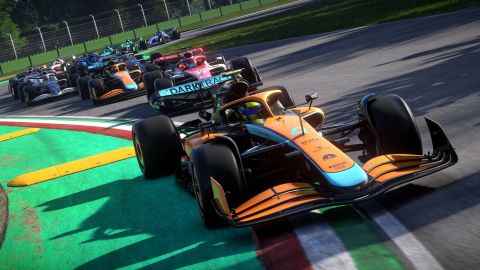Our Verdict
Another superlative career mode, but the avatar customisation and tacked-on supercars feel like bullet points.
PC Gamer's got your back
What is it? The latest in Codemasters' excellent, officially-licensed racing series.
Expect to pay $60/£50
Release date July 1, 2022
Developer Codemasters
Publisher Electronic Arts
Reviewed on NVIDIA RTX 2070, 16GB RAM, Intel Core i7 @ 2.6GHz
Multiplayer? Yes
Link Official site
F1 is properly back in vogue thanks to the Hamilton/Verstappen controversy of last year's finale, Netflix's Drive to Survive docuseries, and closer racing thanks to sweeping rule changes. Every team has managed to score championship points before the midway point of this season. Picking any one of these angles would be a great place to start for a racing game. So why does F1 22 start off by focusing on soft furnishings?
Well. Remember the 'live the life' ethos of F1 2010? This game takes that to its logical conclusion, giving you an all-new living space for your multi-millionaire avatar, which you can kit out right away with furniture, wall hangings and yes, dammit, soft furnishings of your choice. Other players can visit your space online and admire your race trophies, supercar collection and choice of uplighters. It's not very interactive, though; you can only flick between rooms with left and right, rather than walk around your new abode, and the cosmetic options are pretty limited. It's also worryingly geared towards microtransactions as you can buy 'Pitcoins' (groan) with real money to buy all the merch.
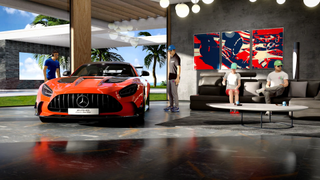
But did someone say 'supercar collection'? Yep, for the first time in the series, the game allows you to collect supercars and display them in your living room to cement your status as having way more money than you need. Still, you can see the attraction. There are some real beauties available right from the get-go, including a gorgeous Ferrari F8 Tributo, and a rather snazzy McLaren 720S.
The physics simulation for these road-going beasts is impressively smooth and precise, and the softer suspension makes them feel much more like real driving than the raw, stiff thrills of the F1 and F2 cars. Supercars can be driven in Time Trial or in 'Pirelli Hot Laps' challenges, of which there are 40, scattered throughout career mode or accessible via their own menu to tackle in three difficulty tiers. From drifting events to average speed checks, the hardest targets are very tricky. But they feel a tad lackluster and tagged-on, and it's a feeling of 'oh, another Supercar bit to do'. They're comparatively slow and unwieldy and you'd surely have already bought Assetto Corsa if you wanted to drive these things. Tokens to buy them unlock as you play, and by the time you've finished your first season, you'll have enough to fill your apartment's six bays.
But let's stop right there. It's the F1 you're here for and, frankly, the supercars' inclusion only highlights why F1 exists. Fortunately, the F1 content is the best ever. You get plenty of choice before you start to determine the kind of experience you'll get. 'My Team' returns, allowing you to start a new F1 team from scratch, acting as owner, team principal and driver, all at once and doing everything from driving to allowing your second driver some extra sim time. Driving is obligatory, mind, though there's so much under your control, it's surely encroaching on F1 Manager's territory. The only thing missing is porpoising (severe bouncing caused by the new ground effect rules), but maybe simulating poor Lewis' backache is one step too far.
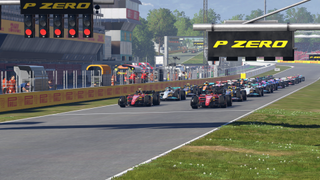
Now with three tiers of initial funding, you can start with limited resources and attempt to build your team into a frontrunning outfit. Or you can start with pockets full of cash and a capable engineering department, allowing you to challenge for the title immediately.
Ultimate team(mate)
There are also some past stars like Prost, Senna and Schumacher available to recruit as an anachronistic team-mate, which is ace, though their demands are so high that even if you can afford them, they might still turn their noses up at your R&D facilities. Motivation to improve, certainly. As with FIFA, EA's servers will download current drivers' real-world standings and car performance, which not only means realistic positions for drivers during races (aside from Mick Schumacher, who is OP), but also the returning ability to start your season at the current point of the real 2022 season. Obviously that particular magic will only be available for a few more months, but it's still a really nice touch for anyone heavily invested in the real sport. Sprint races are in, too, as is the full, playable 2021 F2 line-up, making this a convincing and complete career package if you go all-in.
Having a rival to beat when you're otherwise deep in mid-pack obscurity again makes a massive difference to the enjoyment of the game and you'll find yourself eagerly scanning the timesheets to see if Carlos Sainz is indeed the 'smooth operator', or if it is, in fact, you.
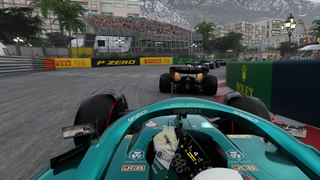
The usual practice sessions return and are mandatory in career mode, though they can be skipped or simulated. The skill tree system remains deep, yet easy to understand, and is all beautifully interwoven into the authentic, full-weekend experience. Development points gained from practice sessions really feel important as the teams rise and fall in strength as the season develops.
Running underneath all of this, the wealth of player choice in the options menus is superlative. You can toggle weather report accuracy, the frequency of mechanical issues, parc ferme restrictions... every element you could mention can be tweaked to your liking. Accessibility options are comprehensive too, even offering the option to convert voice chat into text.
The wealth of player choice in the options menus is superlative.
There has been a notable push to increase interactivity in areas that were previously computer-controlled. You can now drive the entire parade lap, before manually lining up your car on the grid, which is a first for any mainstream F1 game. You will feel very smug being told it was brilliant parking until your finger slips off the clutch and you earn an instant drive-through penalty. There's also a new QTE of sorts for turning into your box during pit stops, and getting it wrong adds a second or two to your stop time. Again, this is all completely optional, but the depth is there if you want it.
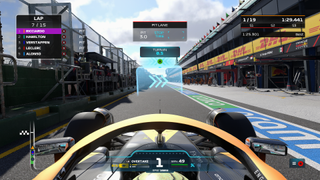
The damage system is more realistic than ever, with new sidepod and floor damage as well as suspension rods that snap off and add to the debris. It's not a crash simulator like Wreckfest, but on full simulation, the cars are realistically fragile, which is great for fans who demand the real experience. If only external views of crashes were as convincing as they were in F1 2010. These cars are almost glued to the ground.
The core act of racing is excellent, and augmented by all the extra systems like DRS and the overtake button, which can be deployed manually, allowing you to conserve energy and fill the battery ready for a big push for a couple of laps. It's tactical driving heaven, and your engineer will remind you if you're forgetting to use your battery. The AI drives impressively when it's on the defensive, covering off the inside line. It'll still turn in on you if you're anything less than completely alongside, which is annoying if you've got fragility turned up to its maximum, but at least flashbacks return, allowing you to undo the prang and try a different approach. Taking fewer risks is probably the more authentic solution.
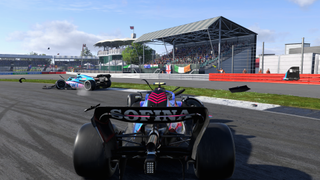
In a rare negative note, direction changes are oddly laboured with a controller, as there's a clear delay between switching steering extremes, presumably to simulate the act of turning the wheel. You get used to it, certainly, but it makes the car feel heavier, and that's not a good thing when absolute precision is required, especially at tracks like Monaco. There's no obvious way to switch it off.
Difficulty-wise, too, it's not perfectly balanced, with AI pace varying from race to race, particularly when it rains. The AI is formidable in the rain compared to the same setting in the dry.
Tracing point
Surprisingly, the last criticism is that F1 22 doesn't look as good as it probably should at this point, though TV replay angles do look more realistic than last year and the on-track action looks marvelous. Your pit crew are still all residents of the uncanny valley, but more fundamentally, the ray tracing isn't particularly impressive, even on Ultra.
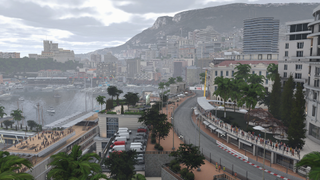
The effect is applied progressively, so whenever an object moves, the reflection quality diminishes, before drawing back in when it's still. It's something a lot of games do, but when you're doing 200mph, there isn't a great deal of stillness (odd, that), so reflections are usually a bit blurry compared to traditional lighting. The effect looks undeniably beautiful in stills, but certainly isn't worth the performance hit on the track. There are several DLSS and TAA options, and a benchmark test too. On an RTX 2070, disabling ray tracing results in some 100fps at 1080p on Ultra, and looks fantastic, so the decision is pretty easy.
Small gripes aside, F1 22 is simply another brilliant simulation of the sport; the most convincing and exhaustive there's ever been. However, great though the improvements are, it's also the most modest evolution we've seen for a while. The supercars and avatar nonsense make the game appear new without really changing it meaningfully, and certainly don't make up for the absence of last year's 'Braking Point' story mode. It's still an easy purchase to recommend as it's a masterclass in racing game design and plays extremely well, but the annual release hasn't felt this unnecessary since F1 2014.
Another superlative career mode, but the avatar customisation and tacked-on supercars feel like bullet points.
